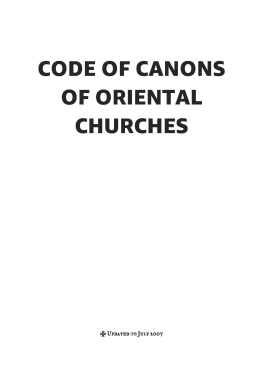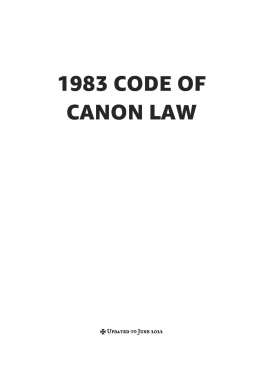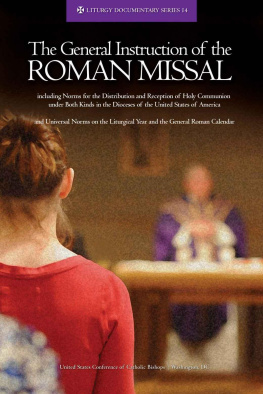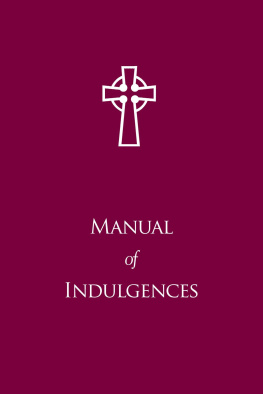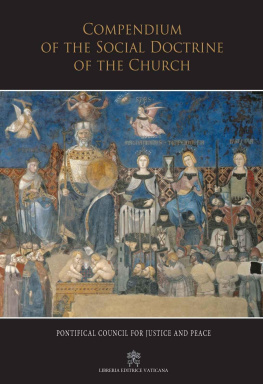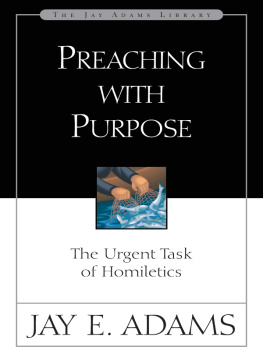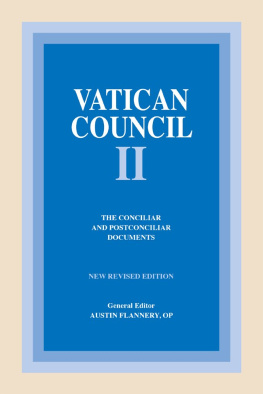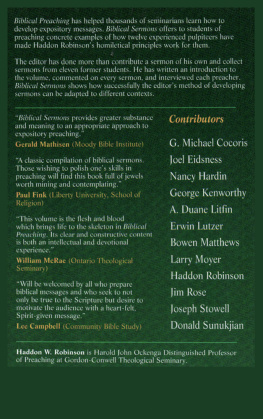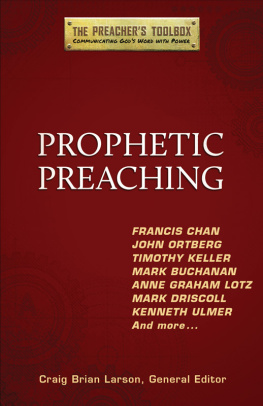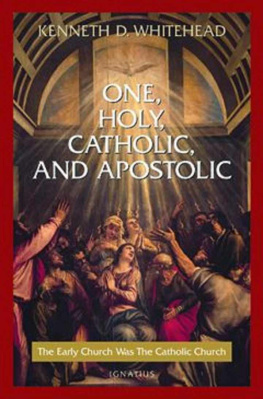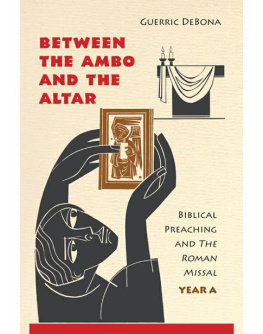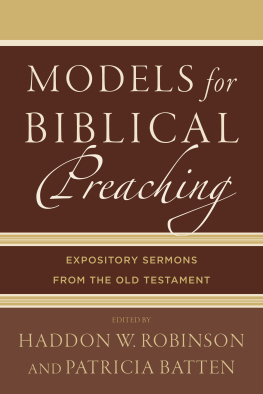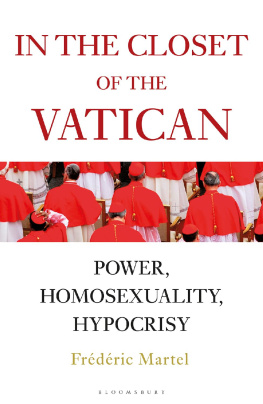Homiletic Directory
ABBREVIATIONS
CCC Catechism of the Catholic Church
DV Second Vatican Council, Dogmatic Constitution on Divine Revelation Dei Verbum
EG Apostolic Exhortation of Pope Francis Evangelium gaudium
OLM Ordo Lectionum Missae, Praenotanda ( Introduction of the Lectionary )
SC Second Vatican Council, Constitution on the Sacred Liturgy Sacrosanctum Concilium
VD Apostolic Exhortation of Benedict XVI Verbum Domini
Prot. N. 531/14
DECREE
It is very poignant that Pope Francis wished to devote considerable attention to the theme of the homily in his Apostolic Exhortation Evangelii gaudium . Both positive and negative aspects of the state of preaching had already been expressed by Bishops gathered in Synod, and guidance for homilists was offered in the Post-Synodal Apostolic Exhortations Verbum Domini and Sacramentum caritatis of Pope Benedict XVI.
From this perspective, and bearing in mind the provisions of the Constitution on the Sacred Liturgy Sacrosanctum Concilium , as well as subsequent Magisterial teaching, and in light of the Introduction to the Lectionary for Mass and the General Instruction of the Roman Missal , this two-part Homiletic Directory has been prepared.
In the first part, entitled The homily and its liturgical setting , the nature, function, and specific context of the homily are described. Other aspects that define it are also addressed, namely, the appropriate ordained minister who delivers it, its reference to the Word of God, the proximate and remote preparation for its composition, and its recipients.
In the second part, the Ars praedicandi , essential questions of method and content that the homilist must know and take into account in the preparation and delivery of the homily are illustrated. In a way that is meant to be indicative and not exhaustive, interpretive keys are proposed for the cycle of Sundays and Feasts, beginning at the heart of the liturgical year (the Sacred Triduum and Easter Time, Lent, Advent, Christmas Time, and Ordinary Time), and also for the Masses of weekdays, weddings, and funerals. In these examples, the criteria outlined in the first part of the Directory are put into practice: typology between the Old and New Testaments, the importance of the Gospel reading, the ordering of the readings, and the nexus between the Liturgy of the Word and the Liturgy of the Eucharist, between the Biblical message and the liturgical texts, between celebration and life, and between listening to God and the particular assembly.
Two appendices follow the main text. In the first, with the intention of showing the link between the homily and the doctrine of the Catholic Church, references are given to the Catechism according to various doctrinal themes in the readings for each of the Sundays and Feasts of the three year cycle. In the second appendix, references to various Magisterial teachings on the homily are provided.
This text was presented to each of the Fathers of the Congregation for Divine Worship and the Discipline of the Sacraments, and was reviewed and approved at the Ordinary Sessions of 7 February and 20 May 2014. It was then presented to Pope Francis, who approved the publication of the Homiletic Directory . This Congregation is pleased, therefore, to make it available, desiring that the homily can actually be an intense and happy experience of the Spirit, a consoling encounter with Gods word, a constant source of renewal and growth ( Evangelii gaudium , 135). Each homilist, making his own the sentiments of the Apostle Paul, is to renew the understanding that as we have been approved by God to be entrusted with the gospel, so we speak, not to please men, but to please God who tests our hearts (1 Thess 2:4).
Translations into the principal languages have been undertaken by this Dicastery, while translations into other languages remain the responsibility of the concerned Conferences of Bishops.
All things to the contrary notwithstanding.
From the offices of the Congregation for Divine Worship and the Discipline of the Sacraments, 29 June 2014, the Solemnity of Saints Peter and Paul, Apostles.
(Antonio Card. Caizares Llovera)
Prefect
(Arthur Roche)
Archbishop Secretary
Table of Contents
Introduction
1. This Homiletic Directory has been produced as the result of the request made by participants in the Synod of Bishops held in 2008 on the Word of God. In response to this request, Pope Benedict XVI directed the competent authorities to prepare a Directory on the homily (cf. VD 60). He had already made his own the concern of the Fathers of an earlier Synod that greater attention be given to the preparation of homilies (cf. Sacramentum caritatis 46). His successor, Pope Francis, also considers preaching to be one of the priorities in the life of the Church, as is evident in his first Apostolic Exhortation, Evangelium gaudium.
In describing the homily, the Fathers of the Second Vatican Council emphasized the unique nature of preaching in the context of the sacred liturgy: The sermon [...] should draw its content mainly from scriptural and liturgical sources, and its character should be that of a proclamation of Gods wonderful works in the history of salvation, the mystery of Christ, ever made present and active within us, especially in the celebration of the liturgy (SC 35, 2). For many centuries the sermon was often a moral or doctrinal instruction delivered at Mass on Sundays and holy days, but it was not necessarily integrated into the celebration itself. Just as the Catholic liturgical movement that began in the late nineteenth century sought to reintegrate personal piety and liturgical spirituality among the faithful, so there were efforts to deepen the integral bond between the Scriptures and worship. These efforts, encouraged by the Popes throughout the first half of the twentieth century, bore fruit in the vision of the Churchs liturgy bequeathed to us by the Second Vatican Council. The nature and purpose of the homily is to be understood from this perspective.
2. For the past fifty years many facets of the homily as envisioned by the Council have been explored in both the magisterial teaching of the Church and in the daily experience of those who exercise the preaching office. The aim of this Directory is to present the purpose of the homily as this has been described in the documents of the Church from the Second Vatican Council to the Apostolic Exhortation Evangelium gaudium , and to offer guidance based on these resources to help preachers carry out their mission properly and effectively. An Appendix at the end of the Directory brings together references to the relevant documents, and these demonstrate how the understanding of the Council has to some extent taken root and grown over the past half century. But they also indicate that further reflection is necessary to ensure the kind of preaching envisioned by the Council.
By way of introduction, we might note four important themes of perennial importance described briefly in the conciliar documents. First, of course, is the place of the Word of God in the liturgical celebration, and what this means regarding the purpose of the homily (cf. SC 24, 35, 52, 56). Second, there are the principles of Catholic biblical interpretation enunciated by the Council, which find a particular expression in the liturgical homily (cf. DV 9-13, 21). Third, there is the consequence of this understanding of the Bible and the liturgy for the preacher, which should shape not only his approach to preparing a homily, but his whole spiritual life (cf. DV 25; Presbyterorum ordinis 4, 18). Fourth, there are the needs of those to whom the Churchs preaching is directed, their culture and circumstances, which also determine the form of the homily, so that its hearers might be more deeply converted to the Gospel (cf. Ad gentes 6). These brief but important directives have influenced Catholic preaching in the decades since the Council; their insights have found concrete expression in Church legislation and have been richly developed by papal teaching, as the citations in this Directory will clearly demonstrate, as well as the list of relevant documents included in Appendix II.
Next page

